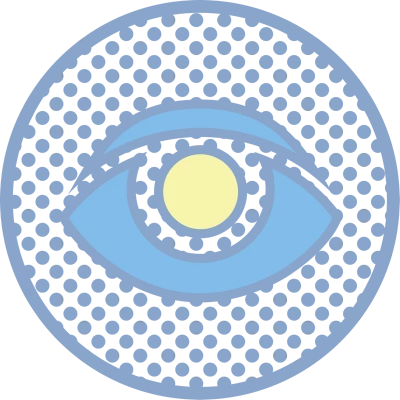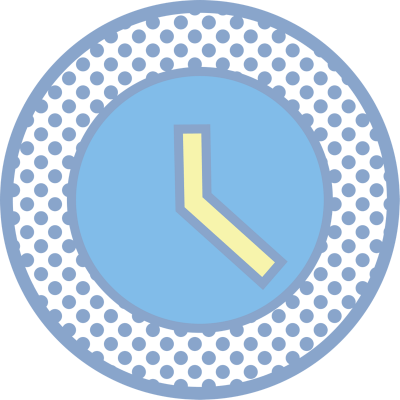What is Nystagmus?
Nystagmus is a neurological eye condition that causes involuntary, repetitive eye movements, making it difficult for an individual to focus on objects. These movements can be horizontal (side-to-side), vertical (up-and-down), or rotational (circular) and often lead to blurred vision, dizziness, light sensitivity, and poor depth perception. The severity of nystagmus varies from person to person, and it can be congenital (present at birth) or acquired later in life.
Individuals with nystagmus may adopt head tilts or unusual postures to reduce symptoms and improve focus. The condition can also be linked to abnormal eye movements, vestibular system dysfunction, or underlying neurological disorders. In some cases, nystagmus causes in adults include brainstem injuries, inner ear disorders, multiple sclerosis, or even medication side effects.
How Common is Nystagmus?
Nystagmus is more common than most people realize, affecting both children and adults. In babies, wobbly eyes in babies may be an early sign of congenital nystagmus. In contrast, adults may develop nystagmus due to head trauma, neurological conditions, or prolonged use of certain medications that affect the nervous system.
Symptoms of Nystagmus Eyes
Nystagmus symptoms can vary depending on the type, severity, and underlying cause of the condition. The most common symptom is uncontrolled, jerky eye movements, but there are other associated vision problems:
-
Blurred or unstable vision
Difficulty focusing on objects, especially at a distance.
-
Light sensitivity (Photophobia)
Increased discomfort in bright environments.
-
Dizziness and poor balance
Many individuals with nystagmus experience motion sickness or vertigo due to unstable vision.
-
Head tilting or unusual postures
People often adjust their head position to find a null point where eye movements are minimized.
-
Eye strain and fatigue
Constant involuntary movement makes reading, driving, and concentrating on tasks challenging.
In infants, wobbly eyes in babies may be an early symptom, which should be evaluated by an eye specialist as soon as possible.

Causes of Nystagmus
Nystagmus can be caused by a wide range of neurological, genetic, and environmental factors. Some of the most common nystagmus causes include:
-
Congenital disorders:
Infantile nystagmus syndrome (INS) is present from birth and is often linked to genetic mutations, optic nerve abnormalities, or developmental delays.
-
Inner ear disorders:
The vestibular system controls balance, and disruptions in inner ear function can lead to abnormal eye movements associated with pendular nystagmus.
-
Neurological diseases:
Conditions like multiple sclerosis, stroke, brain tumors, and Parkinson’s disease can trigger involuntary eye movements.
-
Head injuries
Brainstem or cerebellar damage from trauma can lead to acquired nystagmus.
-
Medication side effects:
Certain drugs, including anti-seizure medications, sedatives, and alcohol, can cause temporary or permanent nystagmus.
In adults, nystagmus causes in adults often involve neurological dysfunction, vestibular system disorders, or severe vision impairment.
Types of Nystagmus
There are multiple types of nystagmus, each with different characteristics and causes.
1. Congenital Nystagmus (Infantile Nystagmus Syndrome – INS)
This form of nystagmus is present from birth and is often linked to genetic mutations, optic nerve disorders, or visual impairments. Babies with INS typically have wobbly eyes in babies, but their condition does not worsen over time.
2. Acquired Nystagmus
This occurs later in life and is usually due to neurological disorders, inner ear problems, or brain injuries. Acquired nystagmus can cause significant visual disturbances and balance issues.
3. Pendular Nystagmus
In pendular nystagmus, the eye movements are smooth and rhythmic, often caused by multiple sclerosis, brainstem lesions, or optic nerve disorders. This form is more common in adults.
4. Jerk Nystagmus
Jerk nystagmus involves a slow eye movement in one direction, followed by a fast corrective movement in the opposite direction. This type is often seen in vestibular disorders.
Risk Factors for Nystagmus
Several factors can increase the risk of developing nystagmus, including:
-
Genetic predisposition:
Some forms of nystagmus are hereditary.
-
Neurological conditions
Diseases like multiple sclerosis, stroke, and Parkinson’s disease can lead to abnormal eye movements.
-
Inner ear problems:
Vestibular system dysfunction is a common cause of pendular nystagmus.
-
Alcohol and drug use:
Excessive alcohol consumption or certain medications can trigger temporary nystagmus.
Tests for Nystagmus
Diagnosing nystagmus requires a comprehensive nystagmus test to evaluate eye movement patterns and underlying causes. Eye specialists perform various assessments, including:
-
Ophthalmologic Examination:
A thorough eye checkup to assess visual acuity, eye alignment, and pupil response.
-
Neurological Evaluation:
Examining the brainstem and vestibular system to detect any neurological disorders causing abnormal eye movements.
-
Electrooculography (EOG):
A test that records eye movement patterns and electrical activity in the eye muscles.
-
MRI or CT Scans
Used to rule out brain abnormalities, tumors, or multiple sclerosis as potential causes.
-
How to Check Nystagmus:
Simple observation of eye movements under different lighting conditions and head positions can help detect nystagmus symptoms.
How to Prevent Nystagmus?
Preventing nystagmus depends on its underlying cause. While congenital nystagmus cannot always be prevented, certain lifestyle changes can reduce the risk of acquired nystagmus. Maintaining good eye health, avoiding excessive alcohol consumption, managing neurological conditions, and reducing exposure to medications that affect the nervous system can help lower the risk. Nystagmus eye exercises, such as focusing on a fixed object and practicing slow eye tracking, may help improve stability and visual function. Regular eye checkups can also aid in early detection and management.
Treatment for Nystagmus Eyes (Eye Dandruff Treatment)
There is no universal cure for nystagmus, but various nystagmus treatments can help reduce symptoms and improve vision. The best approach depends on the type and severity of the condition.
1. Corrective Lenses & Contact Lenses
Wearing glasses or specialized contact lenses can enhance vision clarity by reducing abnormal eye movements and improving focus. Contact lenses are often preferred over glasses, as they move with the eyes, providing a more stable field of vision.
2. Medications & Therapies
Certain medications, such as gabapentin and memantine, have shown effectiveness in reducing nystagmus symptoms. Botox injections are sometimes used to temporarily paralyze overactive eye muscles, leading to improved focus. Vision therapy and nystagmus eye exercises may also be recommended to strengthen eye coordination.
3. Surgical Options
In severe cases, surgical intervention may be considered. Tenotomy surgery involves repositioning the eye muscles to reduce the severity of jerky eye movements, while optic nerve stimulation procedures are being explored as potential treatments.
When to See an Eye Specialist?
Anyone experiencing persistent involuntary eye movements, blurred vision, dizziness, or difficulty maintaining focus should consult an eye specialist immediately. Nystagmus causes in adults often stem from underlying neurological disorders that require prompt medical attention. In infants, if wobbly eyes in babies persist beyond the first few months of life, an early diagnosis can help in managing vision development. Regular eye checkups can help detect abnormal eye movements and initiate appropriate nystagmus treatment for better visual function.
Frequently Asked Questions (FAQs) about Nystagmus
How to check nystagmus?
Nystagmus can be checked through a comprehensive eye examination performed by an eye specialist. The doctor will observe involuntary eye movements under different lighting conditions, head positions, and while the patient focuses on a moving or stationary object. A nystagmus test may include visual acuity assessments, vestibular function tests, and neurological evaluations to determine the severity and underlying cause. Advanced diagnostic tools like electronystagmography (ENG), MRI, or CT scans may be used to check for abnormal eye movements, inner ear disorders, or brain abnormalities that could be contributing to nystagmus.
Is nystagmus a serious condition?
Nystagmus can range from mild to severe, depending on its cause and impact on vision. While congenital nystagmus is generally stable and does not worsen over time, acquired nystagmus can indicate serious neurological or inner ear disorders such as multiple sclerosis, brainstem injury, or stroke. Severe cases can lead to significant visual impairment, dizziness, difficulty focusing, and balance issues, affecting daily activities like reading, driving, and coordination. Early diagnosis and nystagmus treatment, including corrective lenses, medications, or vision therapy, can help manage symptoms and improve quality of life.
What are the different types of nystagmus?
Depending upon the onset of the condition, there are two types of nystagmus:
- Congenital Nystagmus or Early-onset Nystagmus: This type of nystagmus eye occurs between 0-6 months of age. Usually, in congenital nystagmus, pendular movements are noticeable with strikingly low vision.
- Acquired Nystagmus or Late-Onset Nystagmus: This type of nystagmus eye surfaces beyond the age of six months.
What are rapid involuntary eye movement symptoms?
Rapid involuntary eye movement symptoms are caused by a medical eye condition called nystagmus. In this disease, the eye makes uncontrolled, repetitive and rapid movements that often result in reduced vision that can affect the coordination and balance of the eyes.
These involuntary eye movements can occur from different directions like up and down, circular motion, or side to side. Primarily, there are 3 forms of nystagmus eye. Below, we have delved into them one by one:
- Acquired- This type of nystagmus develops in adulthood or in the later stages of childhood.
- Infantile- This type of nystagmus develops between 0-2 months.
- Spasmus nutans- This type of nystagmus eye occurs between the age bracket of 6 months to 3 years. However, one good thing about this age is that it improves on its own between the age of 2 and 8.
What are vertical nystagmus and horizontal nystagmus?
As mentioned above, there are various types of nystagmus eyes depending upon the eye movements and the age at which it develops. In vertical nystagmus, there are involuntary and rapid eye movements in the down beating or up beating direction, which is why it is referred to as ‘vertical’.
On the other hand, in horizontal nystagmus, the eye movements are from side to side. There are several causes of horizontal nystagmus like stroke, optic nerve disorders, lack of pigmentation in the skin, and more.
What does the nystagmus eye indicate?
In patients with nystagmus, specific areas of the brain that are responsible for controlling eye movements do not function properly. However, in many cases, the nystagmus eye condition can indicate different eye problems, or it can also be associated with a totally separate medical condition that might be related to the eye. Retina nerve disorders, multiple sclerosis, head trauma, and Meniere’s disease are some of the many nystagmus causes.
5. Is it a good idea to use biofeedback to treat rapid eye movements?
In layperson terms, biofeedback therapy trains people to voluntarily control certain physiological processes like muscle tension, blood pressure, and heart rate. According to recent studies, biofeedback techniques can prove to be useful in helpful for nystagmus patients to regain control of their rapid eye movements.
In several cases, this innovative technique is used in conjunction with other techniques and therapies that also help with increased anxiety and stress levels.

Do not ignore eye trouble!
Now you can reach our senior doctors by booking an online video consultation or a hospital appointment
Book an appointment now